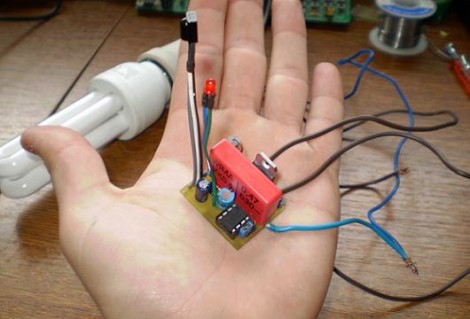
[Muris] is back with another infrared controlled lighting hack. When we checked in with him last year he was showing off an IR controlled dimmer module. Now he’s back with this device that is CFL friendly. Because standard CFL bulbs are not dimmer compatible he’s adapted the project away from dimming and toward switching. The new design still uses an infrared remote but now it can turn two devices on and off again or toggle between them. Our favorite part of the build is that the PIC based device can learn the codes of whichever remote you choose, rather than having to rely on one specific type of remote.















